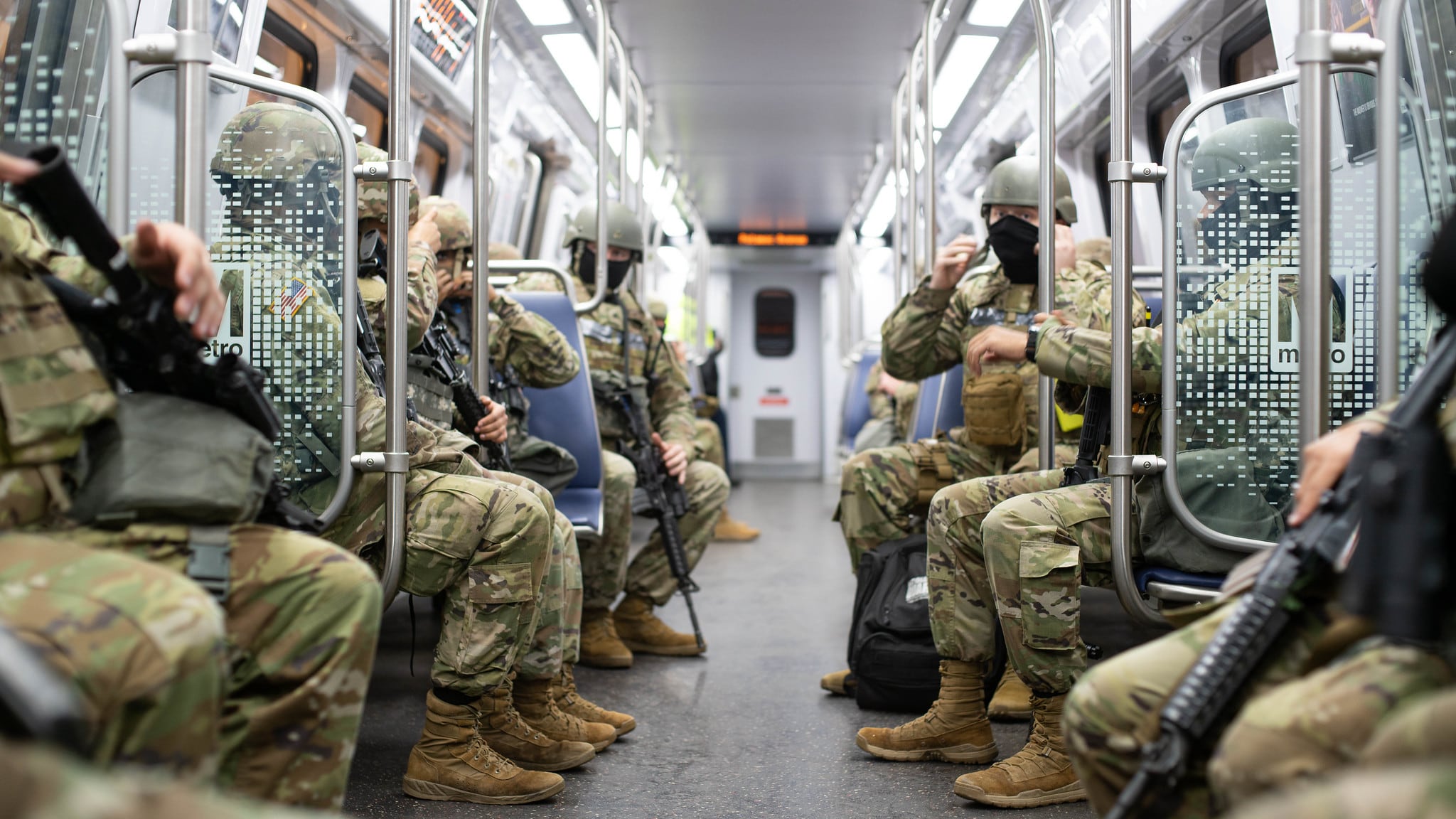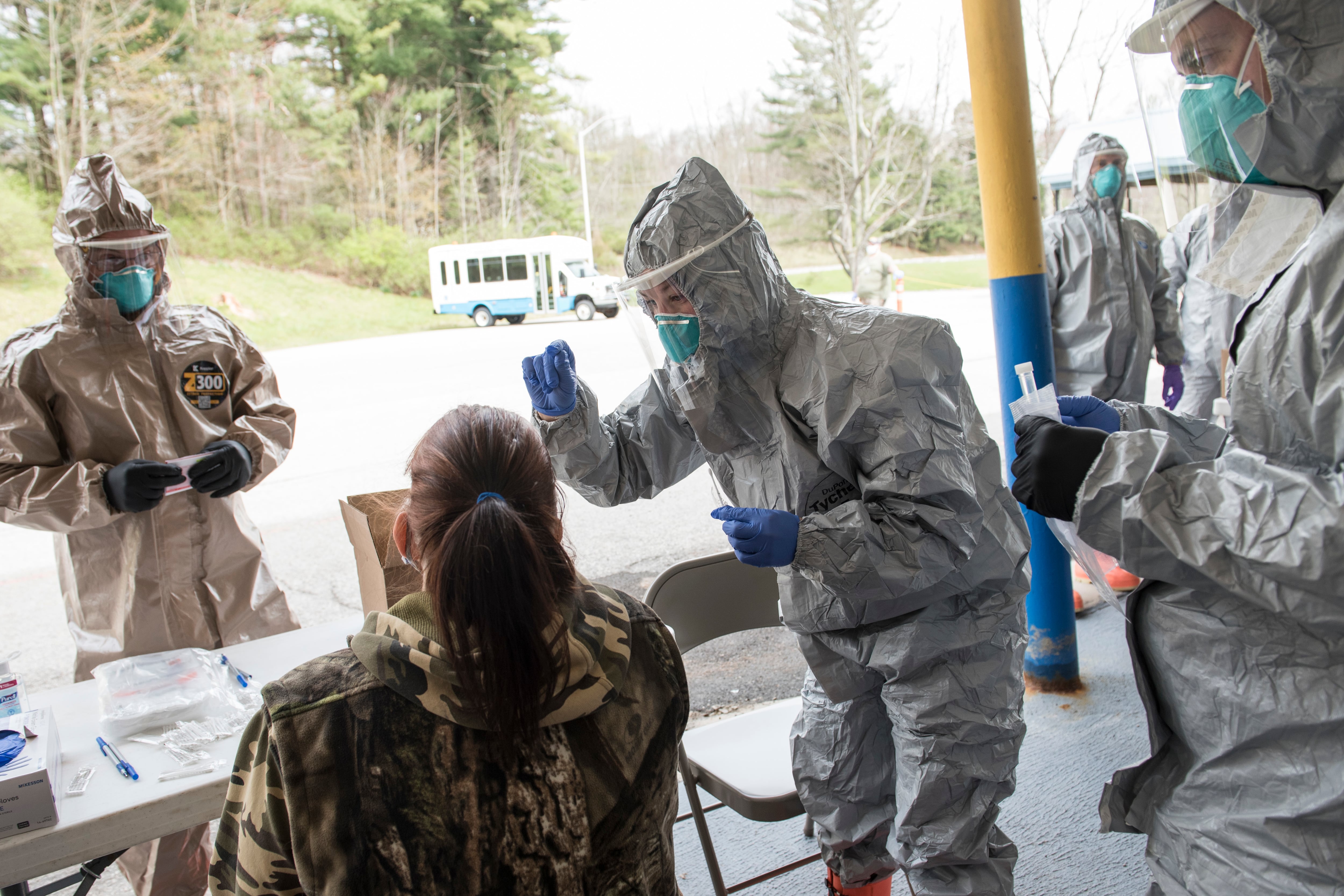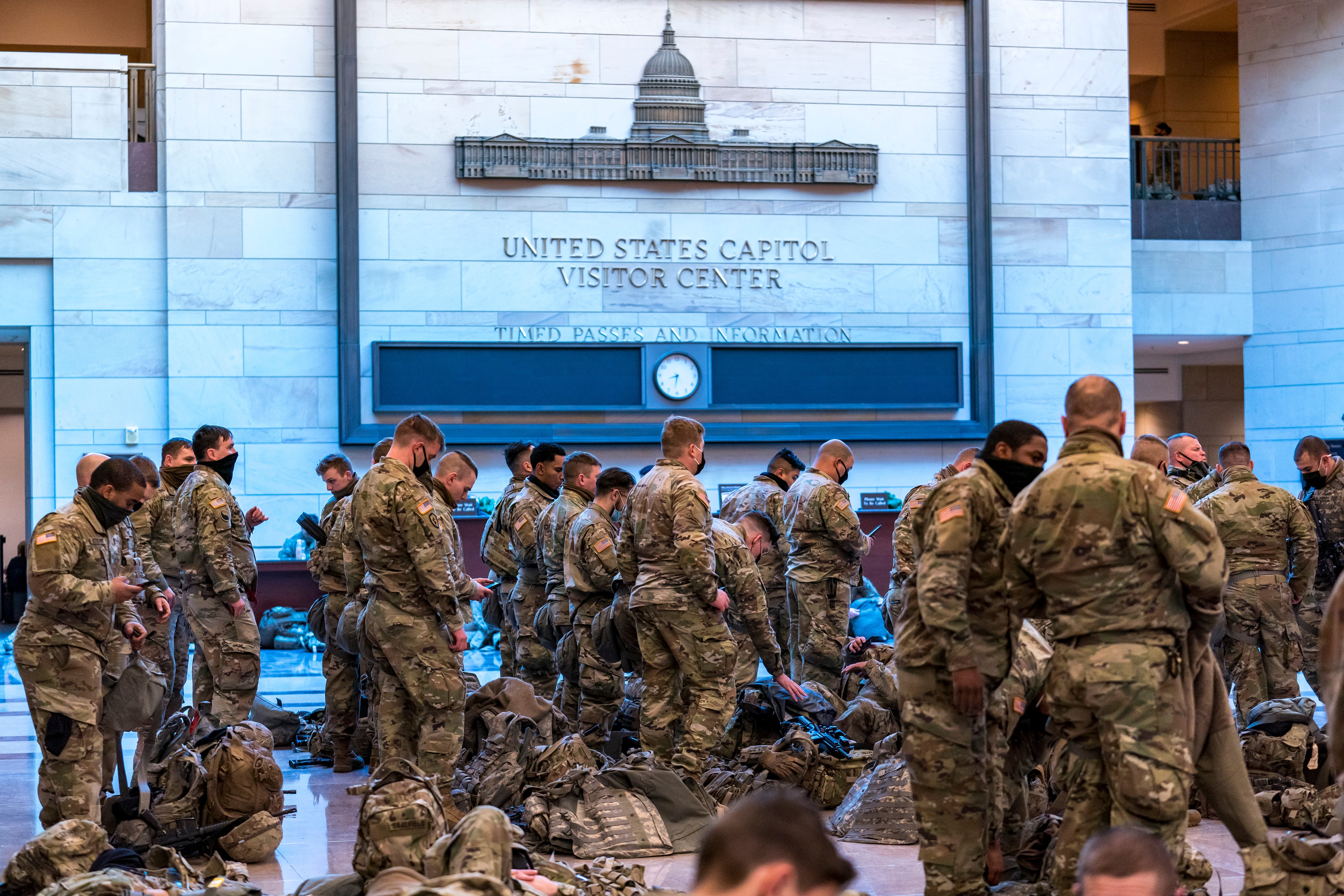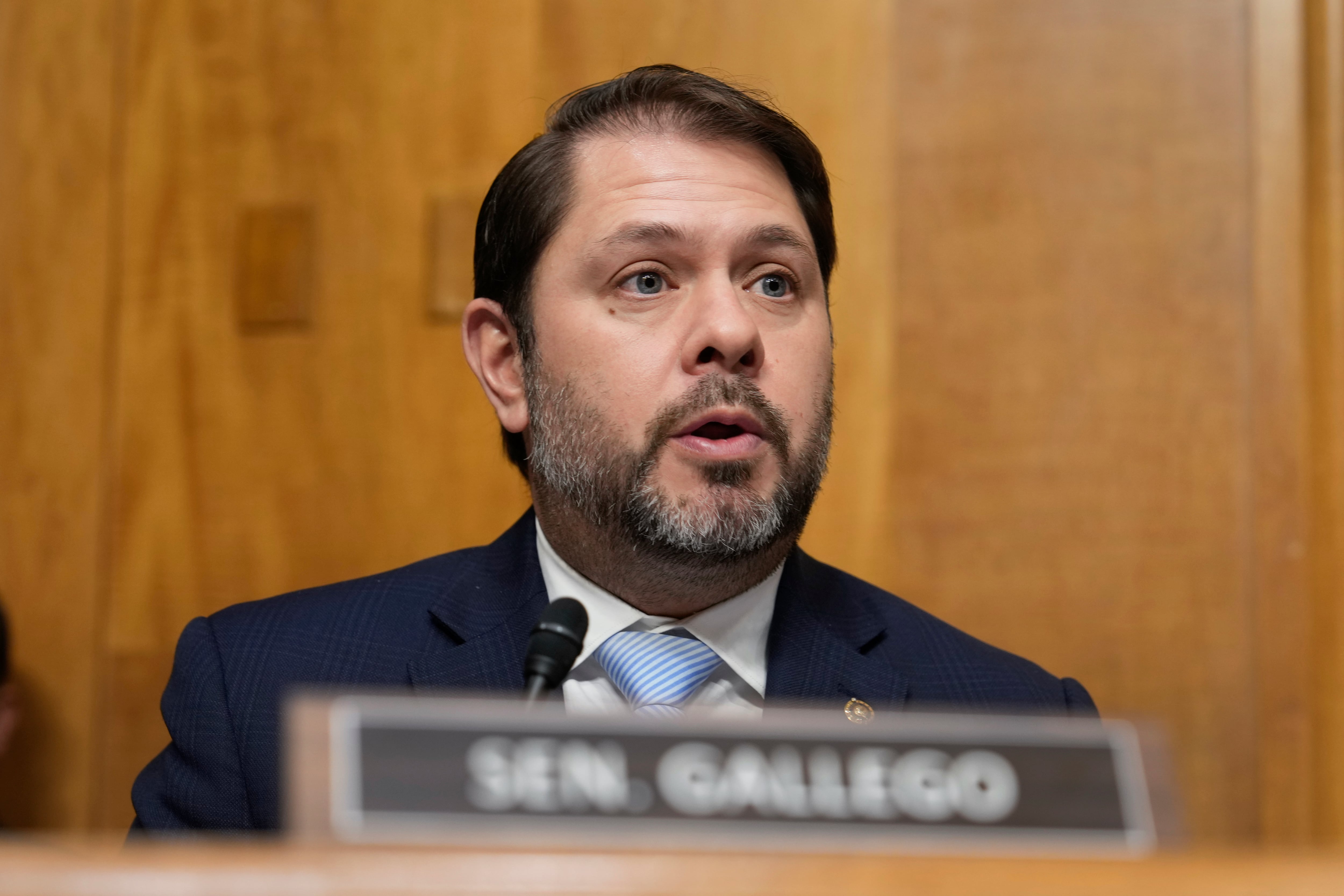On the morning of Jan. 20, two divisions’ worth of National Guard troops — around 26,000, according to National Guard Bureau data shared with Military Times — from 50 states and three territories stood watch in the nation’s capital for the inauguration of President Joseph Biden. Some even rode the Metro to their posts, helmets on and rifles slung.
Another 8,700 guardsmen, the equivalent of two brigades, were on active duty in their home states and territories that morning. Many were supporting local law enforcement officials and were prepared to defend their state capitols if necessary against what an FBI bulletin described as a potential “huge uprising.”
At the same time, another two divisions’ worth of troops — 23,000 soldiers and airmen, to be precise — were donning their masks and other protective equipment to continue the fight against the COVID-19 pandemic.
And yet another 34,300 National Guard troops, the equivalent of another three divisions, woke up that day deployed overseas, guarding the southwest border, or otherwise mobilized under Title 10 federal authority.
In sum, 92,000 National Guard members were activated on Jan. 20. By comparison, only six divisions totaling 73,000 American soldiers landed in France on D-Day, June 6, 1944.
And much like how the Allied assault waves kept coming into the Normandy beaches that day, the activations have kept coming for the National Guard over the past year.
Though many of the troops activated on Jan. 20 have since gone home, the high operational tempo won’t let up any time soon for the Guard’s 441,000 soldiers and airmen.
Fears of continued unrest will keep more than 5,000 Guard troops on duty in Washington D.C. through at least mid-March, including the entirety of the D.C. National Guard, according to an orders memorandum obtained by Military Times. The DCNG will be on duty through March 31, officials say.
The Department of Homeland Security also issued a threat bulletin Wednesday morning that warned of a heightened threat from “ideologically-motivated violent extremists with objections to the exercise of governmental authority and the presidential transition.” Any domestic terror attacks stemming from such groups would likely necessitate a National Guard response in some form.
Meanwhile, the number of Guard troops committed to the COVID-19 response stands to increase in the coming months as states mobilize additional troops to implement Biden’s official COVID-19 response strategy, which highlights the Guard as a key resource for governors. As part of the strategy, Biden increased the federal reimbursement to the states for pandemic-related Guard activations to 100 percent after the Trump administration had previously reduced it.
At the onset of the pandemic, when the federal government was fully reimbursing the effort, the number of guardsmen fighting COVID-19 peaked at 47,100 in mid-May, according to NGB data. It’s not immediately clear whether a surge in activations for vaccine distribution and administration would eclipse the previous peak, but experts around the country are calling for their role to increase.
The National Guard isn’t going home any time soon. And its leaders are starting to worry about the potential impact of this operational strain on the troops, their families, and their employers.

Possible retention impact
One senior leader who has publicly expressed concern about the recent pace of activations is Maj. Gen. James Eifert, the adjutant general of the Florida National Guard. He testified Tuesday to the Florida Senate about how his force doesn’t have enough soldiers to shoulder the demand. Florida Politics first reported Eifert’s comments.
“We cannot adequately support the state’s citizens on Florida’s [hypothetical] worst day with the size of our National Guard at this point,” said Eifert.
He cited the fatigue of current Guardsmen as one of the most pressing needs to expand his force.
“The other thing that is really exacerbated the problem for us as well is the high operational tempo of our guardsmen at this moment,” Eifert explained to legislators. “You can only go back to that well so often because these are volunteers.”
“We’re really concerned on the back end of this…How much are their employers and families going to be willing to allow this to continue with the demand that it’s put on our soldiers?” asked Eifert, raising the question of whether his troops could handle the continued burden of what Florida and the country required of them.
Eifert pointed to the pandemic response, two deployments to D.C., hurricanes, local support to law enforcement, and the current overseas deployment of ten percent of his force as stressors that aligned in 2020 and have continued into 2021.
In addition to Eifert, other senior Guard officials around the country are “sensitized” to the potential retention impact of the current missions, said retired Brig. Gen. Roy Robinson, director of the National Guard Association of the United States.
In a Wednesday evening phone interview with Military Times, Robinson explained that the retention impacts could be greater for some states and certain types of units than others.
“There are certain [Guard] formations — Brigade Combat Teams, some of the MPs, some special forces…that are that are getting pretty close to being about as busy as they can be able to be, and still have to be traditional [part-time] guardsmen,” Robinson said.
“It is geographic in nature,” he explained. “Out west, or in the northeast, or in the southeast…there may be some mitigating circumstances making it more difficult for those units just to keep their formations full.”

Alleviating the strain
Both Eifert and Robinson pointed to increased force sizes as a way to potentially alleviate the operational tempo issues experienced by Guard troops. Adding more troops could help reduce how often current guardsmen are activated for current missions.
“As you look out over what the National Guard has been involved in for the last 36 months…I think it would probably be in the best interest of the nation to continue to grow the National Guard and reserve formations,” said Robinson.
But when it comes down to retaining the soldiers and airmen currently in the part-time ranks, Robinson said, “We have to make sure that we take care of soldiers [and airmen] and reward their service.”
Robinson said one of NGAUS’ top legislative priorities is no-cost Tricare health insurance for Guard troops regardless of their activation status. “They should be covered all the time…I believe that will be a huge retention tool.”
Another issue at play is duty status reform, which has been a thorn in the side of the Defense Department, NGAUS, and guardsmen around the country for years.
Currently, there are dozens of legal statuses under which Guard troops can be activated, and each status carries a unique set of benefits that don’t always mirror those enjoyed by their active duty counterparts.
One such status, State Active Duty, varies from state to state and does not include health coverage beyond workers compensation or any Veterans Affairs disability coverage. SAD is the duty status of first resort for most states who utilize the Guard for local civil disturbance or disaster response missions because it allows troops to enforce laws without running afoul of the Posse Comitatus Act.
Even certain federal active duty statuses can have a Guard servicemember “in the same foxhole” as an active or federal reserve component soldier, said Robinson, but “they may be drawing a different set of benefits.”
A prime example of that phenomena is when Guard troops attend military schools under Title 32 orders, explained JC Cardinale, legislative programs manager for NGAUS. “The only time Title 32 will ever capture Post-9/11 G.I. Bill [benefits] is if you’re responding to a presidential emergency,” Cardinale said in a Thursday morning phone interview.
Cardinale, who is also an Army Reserve officer, said that Army Reserve or Air Force Reserve troops accrue G.I. Bill benefits in these situations while their Guard counterparts do not.
Advocates of duty status reform hold that any day spent in uniform, regardless of status, should count towards the same benefits enjoyed by active component troops.
On Tuesday evening, the Democratic majority of the House Veterans Affairs Committee, headed by Rep. Mark Takano (D-Calif.), reshared an April Medium post in an indication that the current Congress may take up the issue.
“If you perform the same job and take on similar risks, you deserve the same benefits,” read a tweet from the committee.
“The duty status reform process has been ongoing now for about seven years,” said NGAUS director Robinson. “I think we are closer than we’ve ever been to having a product that can actually go over to [Congress].”
Ultimately, Robinson explained, the key to retaining part-time Guard troops — who are answering the call to service at rates not seen since World War II or the Korean War— will be improving their benefits packages to reflect the increased work they’re doing across the country.
“They want to serve their country, but they don’t want to serve their country in a full-time status,” Robinson said.
“We should make it attractive for them to do that.”
The author of this article, Davis Winkie, is a National Guard officer and a member of NGAUS.
Davis Winkie covers the Army for Military Times. He studied history at Vanderbilt and UNC-Chapel Hill, and served five years in the Army Guard. His investigations earned the Society of Professional Journalists' 2023 Sunshine Award and consecutive Military Reporters and Editors honors, among others. Davis was also a 2022 Livingston Awards finalist.





